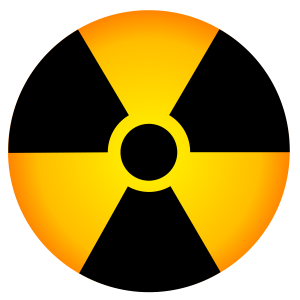 Radiation therapy is a tried-and-true method for treating cancers. However, this treatment also causes tissue damage and DNA mutations to the patient. Damage to the sexual organs or DNA mutations within male sperm or female eggs may cause pregnancies to result in miscarriages, stillbirths, or neonatal death just after birth. The effects of radiation on the offspring of cancer survivors are not well studied. A recent study of patients from the Childhood Cancer Survivor Study shows that radiation to most parts of the body do not cause an increase in stillbirths or neonatal death. However, radiation to the ovaries and uterus does increase this risk.
Radiation therapy is a tried-and-true method for treating cancers. However, this treatment also causes tissue damage and DNA mutations to the patient. Damage to the sexual organs or DNA mutations within male sperm or female eggs may cause pregnancies to result in miscarriages, stillbirths, or neonatal death just after birth. The effects of radiation on the offspring of cancer survivors are not well studied. A recent study of patients from the Childhood Cancer Survivor Study shows that radiation to most parts of the body do not cause an increase in stillbirths or neonatal death. However, radiation to the ovaries and uterus does increase this risk.
In the paper titled “Stillbirth and neonatal death in relation to radiation exposure before conception: a retrospective cohort study,” stillbirth or neonatal deaths occurred in 2% of pregnancies from cancer patients not treated with radiation therapy. Those with low doses of radiation to the uterus and ovaries also reported few cases of these fetal deaths (1-4% of pregnancies). However, 18% of cancer patients who received high levels of total radiation exposure reported pregnancies that resulted in stillbirth or neonatal death.
The cancer survivors in the paper that were at high risk for fetal loss were exposed to radiation levels equal or greater to 10 Gy (call gray), the unit of measurement for absorbed radiation. To give you an idea of that level of radiation, if a person was exposed to 10 Gy at one time, they would die within one month. But spread over the weeks and months of cancer treatment, this technique actually saves lives.
Interestingly, of the women treated with uterine or ovarian radiation prior to their first menstrual period, lower levels have greater effects on future pregnancies. In younger women, radiation treatment as low as 2.5 Gy can cause a 13% risk of later stillbirth or neonatal death.
In contrast to radiation, chemotherapy with the alkylating agents that most frequently cause ovarian failure did not increase the likelihood that pregnancies would result in stillbirth or neonatal death.
The study made me wonder if women treated with ovarian radiation therapy could use ovarian tissue cryopreservation. This could provide fertility preservation for women with a variety of pelvic cancers. However, the authors in the article suspect that the increase in stillbirth and neonatal death in these cancer survivors may be due to tissue damage of the uterus. Because the uterus and ovaries are so close, they could not determine if one organ or both are causing fetal death. Further research will be needed to determine the cause of increased stillbirths and neonatal death in these cancer survivors and to determine if ovarian tissue cryopreservation can preserve their fertility.

